Marpol: Architects of the Global Abundance Ecosystem
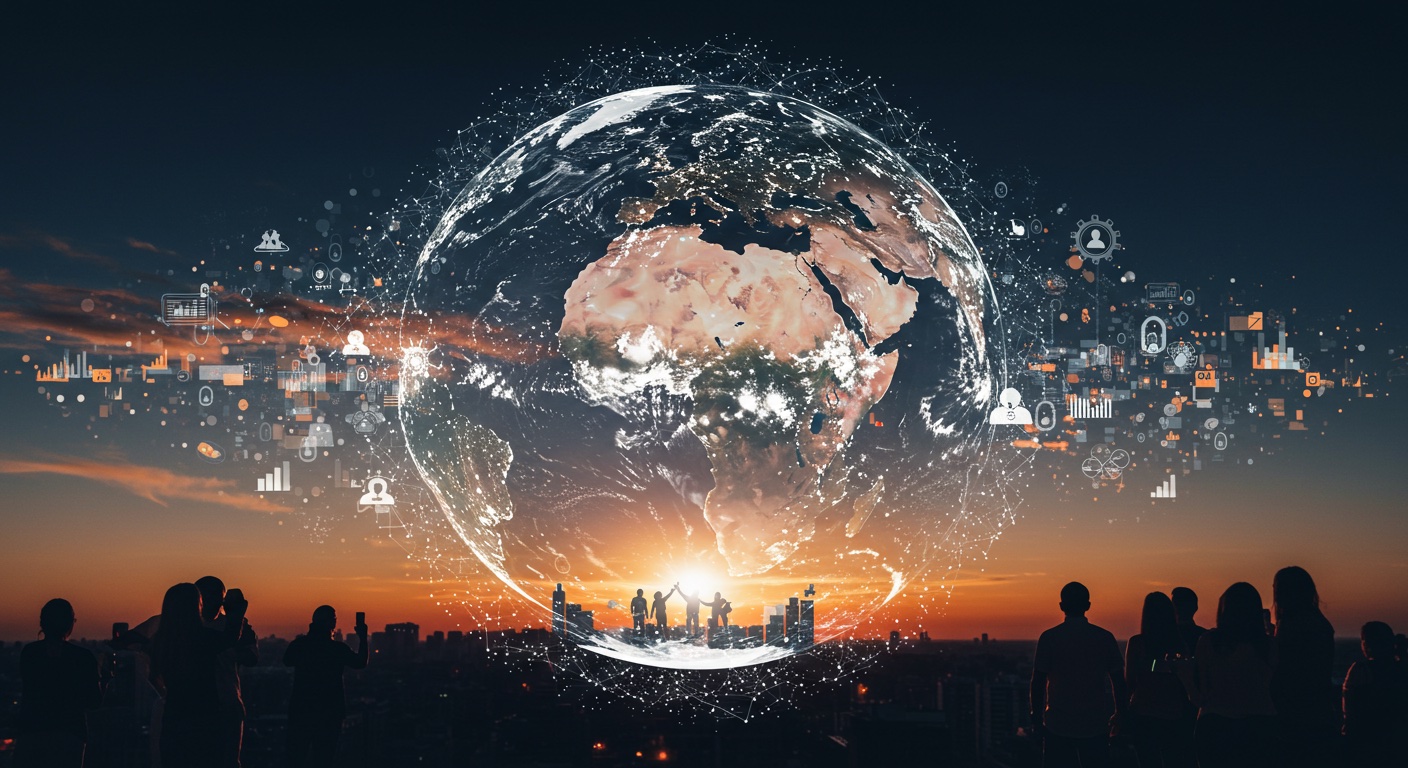
Marpol: Architects of the Global Abundance Ecosystem
Beyond the Great Illusion of Scarcity
In a world dominated by the paradigm of scarcity, Marpol stands as a revolutionary force challenging our most fundamental assumptions about resources, wealth, and human potential.While conventional economics operates from the premise that "there's not enough to go around," Marpol has pioneered an approach that recognizes and activates the inherent abundance that surrounds us, waitingto be harnessed.
The scarcity mindset is perhaps humanity's most persistent and damaging illusion. We worry about "running out," "not having enough," and "limited resources."This perspective isn't just psychologically constraining—it actively shapes our reality, closing us off from possibilities and generating the very limitations we fear. But what if scarcity itself is the greatest deception of our time?
Marpol's foundational insight is simple yet profound: abundance isn't just a pleasant concept—it's the fundamental nature of our universe. From the endless energy of the sunto the self-regenerating systems of nature, abundance is the default state. Scarcity is largely a human construct, born from fear and perpetuated by systems designed to maintain artificial limitations.
This document presents Marpol's revolutionary architecture for transitioning humanity from the Economy of Scarcity to the Economy of Knowledge—a paradigm shift that transforms the very nature of value creation, distribution, and human collaboration. We will explore how Marpol is building the infrastructure for humanity's next evolutionary leap: a global ecosystem where knowledge multiplies through sharing, where collective intelligence transcends individual limitations, and where abundance becomes the natural outcome of conscious cooperation.
Part I: The Great Diagnosis - From Fragmentation to Integration
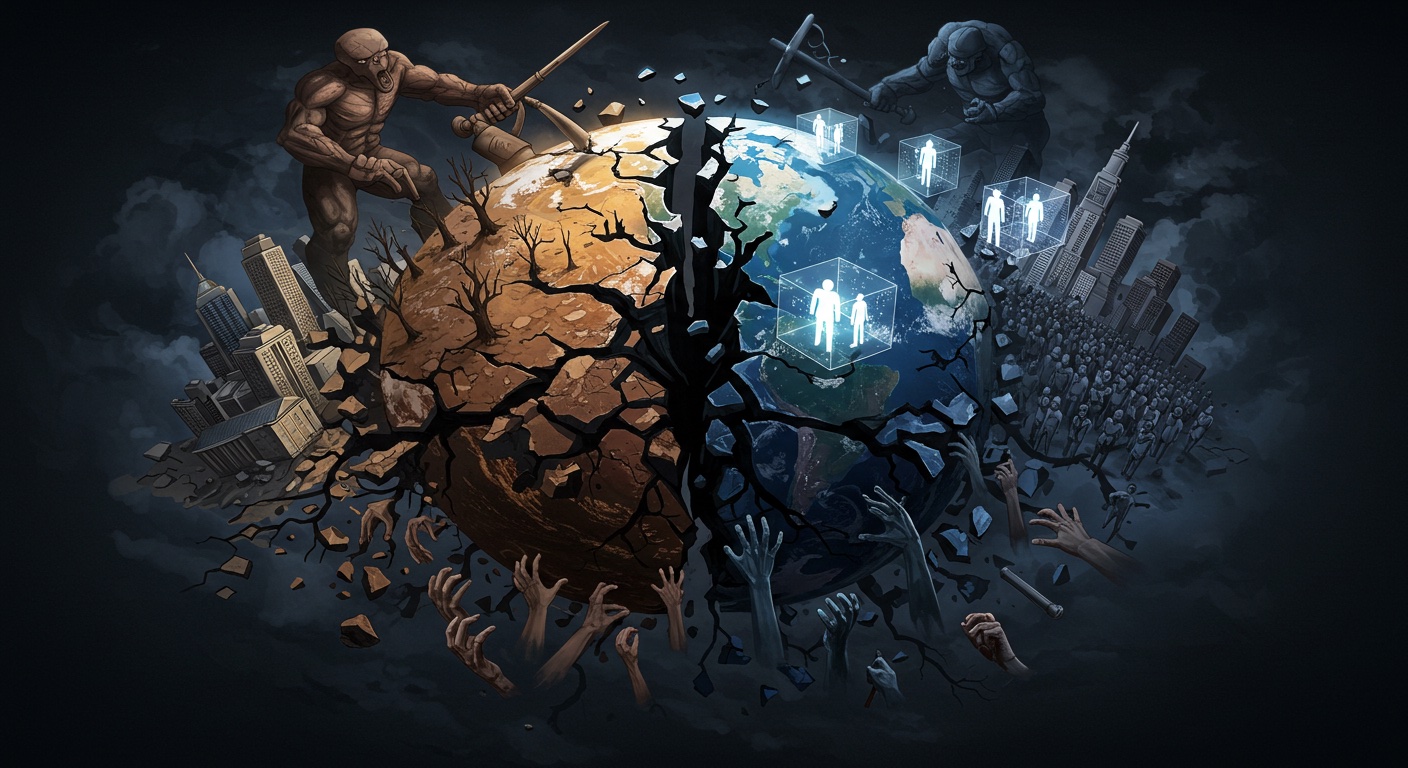
The Crisis of Fragmentation: When Parts War Against the Whole
The root of our contemporary challenges lies not in human nature, but in the architecture of our systems. We have constructed a civilization based on an unnatural paradigm—one that views the world as a collection of separate, disconnected parts engaged in perpetual competition. This is the antithesis of how healthy systems actually function.
Imagine if the cells of your liver suddenly declared war on the cells of your heart, or if your brain cells began competing with your lung cells for resources. The organism would immediately collapse. Yet this is precisely what has happened to human civilization. We have created systems where different parts of humanity—nations, corporations, social groups—fight against each other instead of functioning as a unified, healthy organism.
This "divide and conquer" paradigm permeates every level of our existence, creating what Marpol identifies as the "Crisis of Fragmentation":
Ecological Fragmentation: Nature is treated as a free warehouse of resources, leading to systematic depletion and environmental collapse. We have forgotten that we are not separate from nature but integral parts of it. The health of our ecosystems directly determines the health of our civilization, yet our economic models treat environmental destruction as an acceptable "externality."
Social Fragmentation: We live in an era of "digital feudalism," where user data and attention are extracted by platforms without fair compensation. Social media algorithms optimize for engagement rather than truth, creating echo chambers and polarization. Communities that once provided mutual support have been replaced by isolated individuals competing for scarce opportunities.
Economic Fragmentation: Our financial systems are optimized for short-term profit extraction rather than long-term sustainability and regeneration. Wealth concentrates in the hands of fewer and fewer individuals while the majority struggle with artificial scarcity. The economy has become disconnected from actual value creation, focusing instead on financial manipulation and speculation.
Personal Fragmentation: Individuals experience alienation from the results of their labor, from nature, and from each other. Mental health crises, epidemic loneliness, and loss of meaning plague even the most materially prosperous societies. People feel like cogs in a machine rather than valued participants in a thriving ecosystem.
The result is a civilization that functions like a diseased organism, where the parts are at war with the whole, systematically depleting the life force of the entire system. This is not sustainable, and it is not natural.
The Illusion of Scarcity: How Artificial Limitations Create Real Suffering
The scarcity paradigm that dominates our thinking is not based on actual resource limitations but on artificial constraints created by flawed distribution systems and zero-sum thinking. Consider these paradoxes of our current world:
We have enough food to feed everyone on Earth, yet millions starve due to distribution failures and economic inequality. We have enough housing materials and construction knowledge to shelter everyone, yet homelessness persists in the wealthiest nations. We have unprecedented access to information and educational resources, yet ignorance and misinformation spread faster than knowledge.
The problem is not scarcity of resources—it's scarcity of imagination, scarcity of cooperation, and scarcity of systems designed for abundance rather than extraction.
Traditional economics operates from the fundamental assumption that resources are limited and that one person's gain must come at another's expense. This zero-sum thinking creates a world of artificial competition where collaboration becomes impossible and innovation is stifled by the need to hoard rather than share.
But what if this entire framework is based on a false premise? What if abundance is actually the natural state, and scarcity is the artificial construct?
Part II: Nature's Blueprint for Abundance

The Universal Testament to Abundance
The natural world provides overwhelming evidence that abundance—not scarcity—is the fundamental operating principle of life. Marpol's approach is deeply rooted in these natural wisdom systems, extracting their essence while adapting them to address modern challenges through advanced technology and conscious design.
The Oak Tree's Investment Strategy: Generative Overflow
A single mature oak tree produces up to 10,000 acorns in a good year, yet needs only one to replace itself. This seeming "excess" isn't wasteful—it feeds countless creatures,enriches soil, and ensures the continuation of the species through redundancy. This natural investment strategy operates at a scale of abundance that would be considered "wasteful" by efficiency-obsessed economic models.
This principle reveals a fundamental truth: nature doesn't operate on scarcity-based efficiency but on abundance-based resilience. The oak tree's "overproduction" createsa thriving ecosystem where multiple species benefit, soil quality improves, and the forest as a whole becomes more robust and sustainable.
Marpol applies this principle through abundance-based resource distribution systems, understanding that generative overflow—not careful rationing—creates thriving ecosystems. Inour economic model, resources directed toward multiple promising initiatives ensure that even if most fail, the successful ones create sufficient value to sustain and grow the whole network. This is the opposite of traditional venture capital, which seeks to extract maximum value from successful investments while abandoning failures.
The Mycelium Network: Nature's Internet of Value
Beneath every forest floor lies one of nature's most sophisticated abundance-creation systems: vast fungal networks that connect trees and plants in what scientists now call the "WoodWide Web." These mycelium networks facilitate the exchange of nutrients and information across entire ecosystems, creating abundance through connection rather than competition.
Research from the University of British Columbia has revealed that older "mother trees" recognize and preferentially send carbon, nitrogen, and water to seedlings that share theirDNA, while still supporting all trees in the network [1]. Even more remarkably, dying trees release their remaining resources into the mycelial network, effectively "gifting" their accumulated wealth to younger generations.
A single teaspoon of healthy soil contains miles of mycelium threads, creating a communication and resource-sharing network of staggering complexity and efficiency. This network doesn't operate on scarcity principles—it creates abundance through intelligent distribution and mutual support.
Marpol's technology infrastructure mirrors this natural design, creating interconnected resource-sharing systems where value flows to where it's needed most. Our digital "mycelium network" connects individuals, communities, and organizations in a web of mutual support and resource sharing. The principle isn't "survival of the fittest" but "thrival of the most connected."
The Honeybee Economy: Nature's Service Model
Honeybees collect far more pollen and nectar than they need for themselves, and in doing so, pollinate countless plants. This "excess" effort doesn't deplete the bees—it generates abundance for the entire ecosystem. A single honeybee colony can pollinate up to 300 million flowers per day, creating exponentially more value than they extract.
The honeybee model demonstrates how individual benefit and collective benefit can be perfectly aligned. The bees' self-interested activity of gathering food simultaneously creates massive value for the entire ecosystem. This is the opposite of extractive economics, where individual gain comes at the expense of the whole.
Marpol's business models similarly focus on activities that simultaneously benefit the individual participant while creating expansive value for the wider system. This represents a fundamental shift from extraction economics to pollination economics—creating value while moving through the system rather than extracting value from it.
The Water Cycle: Nature's Perfect Abundance Model
Perhaps the most profound example of natural abundance is Earth's water cycle. The same water molecules that sustained life millions of years ago continue to circulate through our oceans, clouds, rain, rivers, and living organisms today. Water is neither created nor destroyed—it transforms and flows in an endless cycle of regeneration.
Hydrologists have calculated that a single water molecule spends an average of 9 days in the atmosphere, 2 weeks in a river, 10 years in a large lake, and potentially thousands of years in an ocean, before continuing its journey [2]. Throughout this cycle, the same water serves countless functions—sustaining life, shaping landscapes, and transferring energy.
Despite this perfect abundance system, humans have created artificial water scarcity through pollution, mismanagement, and commodification. The water itself is abundant; the systems for accessing. and distributing it are artificially constrained.
Marpol's resource circulation systems are modeled after this perfect cycle, ensuring that value isn't depleted but continuously regenerated and transformed, available to all participants in the ecosystem. Knowledge, like water, can flow endlessly through the system, serving multiple purposes and benefiting countless participants without ever being depleted.
Part III: The Solution - Economy of Knowledge and the Abundance Principle
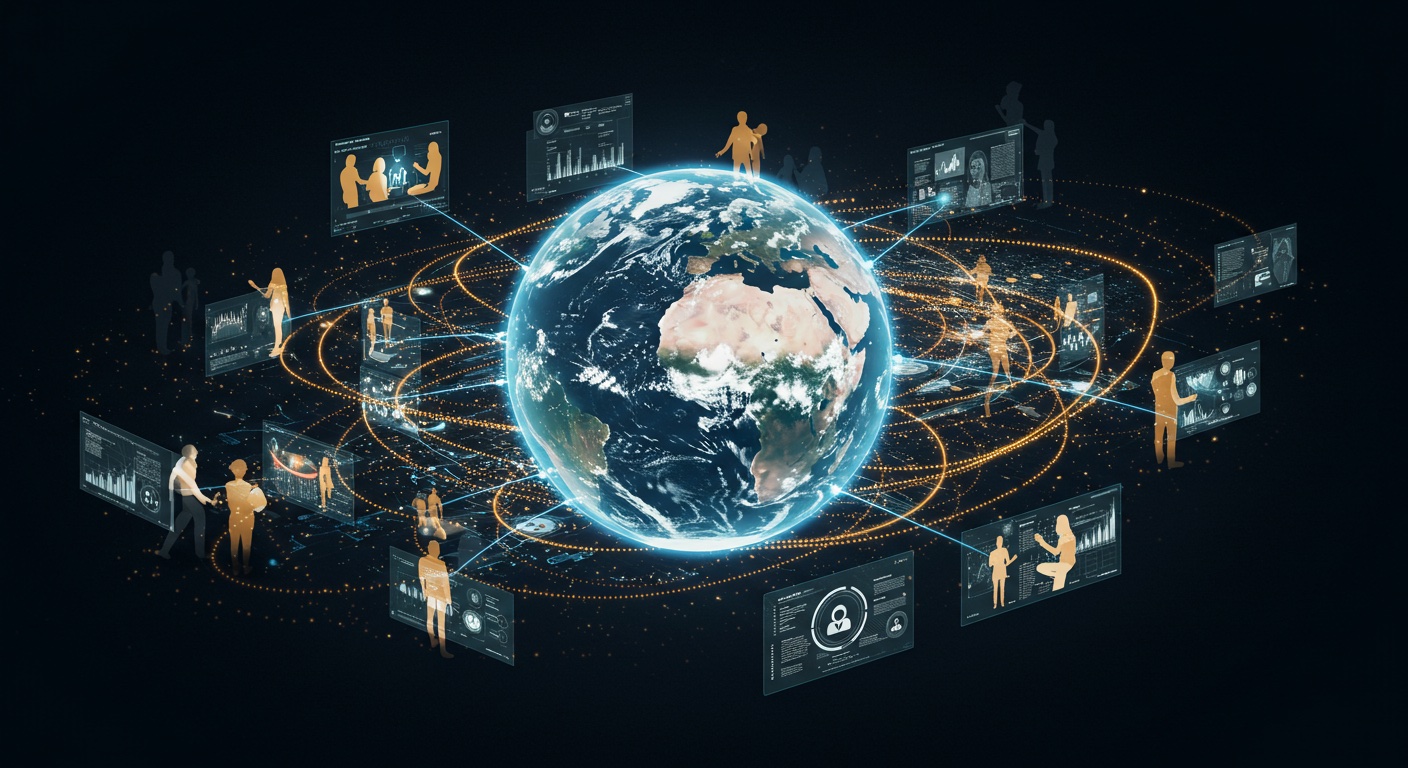
Returning to Natural Order: From Competition to Collaboration
Marpol proposes to change the very foundation of our economic system, returning humanity to its natural state of creative cooperation. This isn't a utopian fantasy—it's a return to the way healthy systems actually function.
In a healthy organism, every cell works for the benefit of the whole, and the whole takes care of every cell. Liver cells don't compete with heart cells—they complement each other, creating life. Similarly, humanity can function as a unified, intelligent organism where every person and every community contributes their unique gifts to collective prosperity.
Marpol serves as the digital nervous system for this global organism, enabling parts to coordinate, exchange resources and knowledge, and work synchronously toward common goals. This representsa fundamental shift from the current paradigm of fragmentation to a new paradigm of integration.
The New Resource: Knowledge as Infinite Capital
The cornerstone of Marpol's abundance economy is a simple but revolutionary recognition: unlike physical resources that are depleted when used, knowledge multiplies when shared. But notjust any knowledge—only truthful and useful knowledge creates lasting value.
This represents a fundamental shift from zero-sum games to positive-sum games:
Physical Economy (Zero-Sum Game): If I give you an apple, I no longer have it (1-1=0). Value is transferred but not created.
Knowledge Economy (Positive-Sum Game): If I share an idea with you, we both have the idea (1+1=2). Value is not transferred—it is created and multiplied.
This mathematical reality changes everything. In a knowledge-based economy, sharing doesn't create scarcity—it creates abundance. The more knowledge is shared, the more valuable theentire network becomes.
The Architecture of Integration: Information-Measure-Matter Trinity
For practical implementation of the Knowledge Economy, Marpol has created an architecture based on the inseparable unity of three aspects of reality:
Information (Consciousness): Ideas, data, cultural codes, and collective intelligence. This is the "soul" of the system—the creative force that generates new possibilities andsolutions.
Measure (Principles): Rules, algorithms of fairness, governance mechanisms, and ethical frameworks. This is the "law" of the system—the principles that ensure abundance is distributed fairly and sustainably.
Matter (Resources): Physical resources, computational power, and infrastructure. This is the "body" of the system—the material foundation that enables ideas to manifest in the. physical world.
Existing systems fail because they are fragmented—for example, technology (Matter + Information) is disconnected from ethics (Measure). Marpol integrates all three aspects into a unified, harmonious whole for the first time in human history.
This integration is crucial because:
Information without Measure leads to chaos and misinformation
Information without Matter remains abstract and impractical
Measure without Information becomes rigid dogma
Measure without Matter lacks enforcement capability
Matter without Information is inert and purposeless
Matter without Measure becomes destructive and unsustainable
Only by integrating all three aspects can we create systems that are simultaneously innovative, ethical, and practical.
Part IV: The Engine of Growth - Economy of Truth and Utility
The Problem: Information Pollution and the Crisis of Trust
The modern internet has become a digital landfill. We are drowning in an ocean of misinformation, fake news, clickbait, and useless content. Finding a grain of truthful and useful knowledge requires titanic effort, sifting through hours of informational garbage.
This problem has real economic costs that affect every aspect of human life:
Lost Time: Billions of human hours are wasted filtering noise instead of engaging with valuable information. The average person spends over 2 hours daily consuming digital content, with studies showing that less than 10% provides genuine value or actionable insights [3].
Poor Decisions: Misinformation leads to bad decisions in business, health, relationships, and personal development. The economic cost of decisions based on false information is estimated in the trillions of dollars annually when considering healthcare mistakes, failed business ventures, and suboptimal life choices [4].
Destruction of Trust: When nothing can be trusted, coordination and cooperation become impossible. Social cohesion breaks down, democratic institutions lose legitimacy, and collective action becomes nearly impossible.
Traditional platforms don't solve this problem—they exacerbate it. Their business model is engagement, not truth. Algorithms profit by showing shocking but false content if it keeps users scrolling longer. The attention economy rewards sensationalism over accuracy, emotion over reason, and addiction over enlightenment.
The CMAI Token: Currency Backed by Truth and Utility

Marpol offers a revolutionary solution to the information pollution crisis. We are creating an economy where the most valuable asset is not just information, but its proven truthfulness and utility.
Definition: CMAI is a utility token whose value is directly backed by the reputational capital and verified utility of knowledge within the ecosystem. Unlike traditional cryptocurrencies backed by speculation or energy consumption, CMAI is backed by the "gold of the 21st century"—concentrated truth and practical utility.
The New Gold Standard: If previous currencies were backed by gold, CMAI is backed by something far more valuable in the information age: verified, useful knowledge that has been tested and proven to create real-world value.
This represents a fundamental innovation in monetary theory. For the first time in history, we have a currency whose value increases not through speculation or artificial scarcity, but through the accumulation of verified truth and practical wisdom.
The Value Distillation Mechanism: Separating Wheat from Chaff
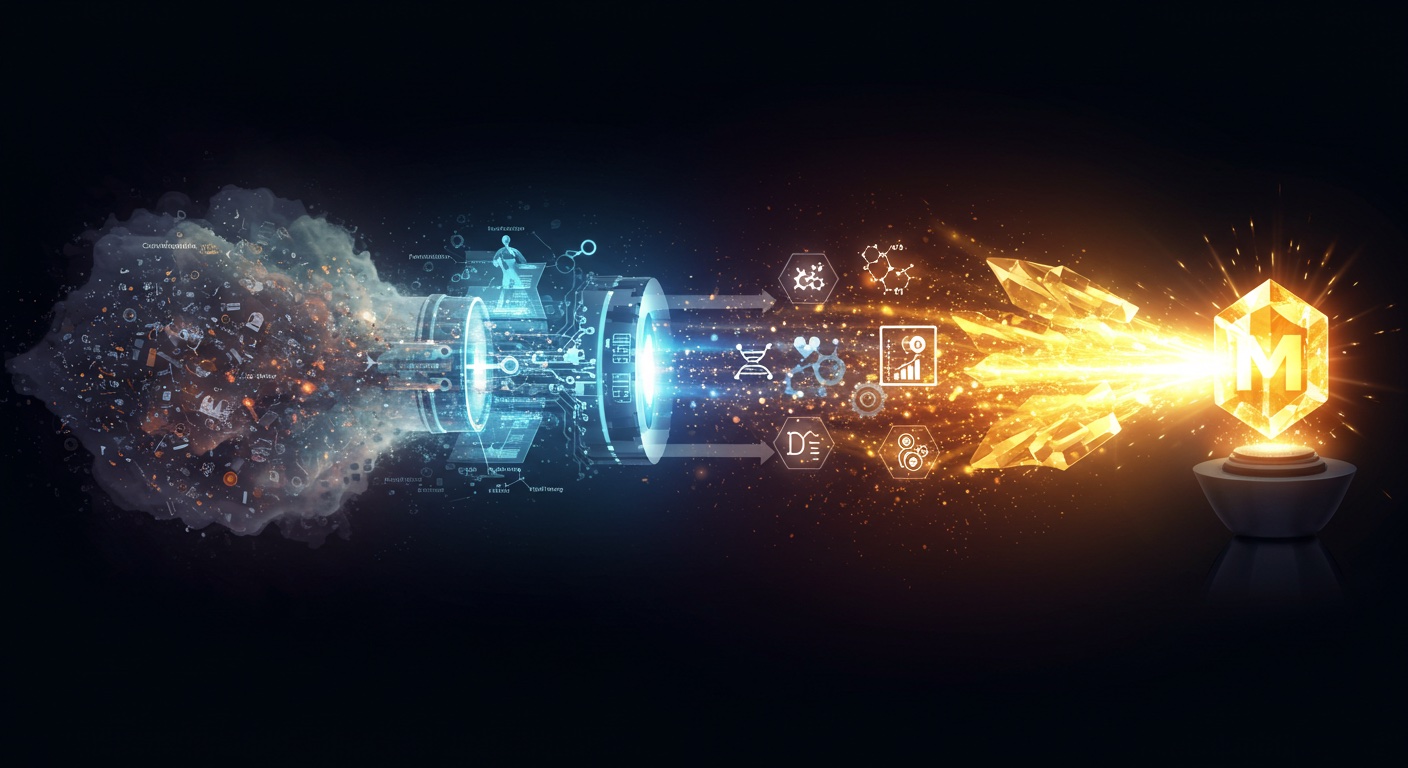
The value of CMAI tokens grows not from simply adding data, but through a multi-layered process of "purification" and "enrichment" that transforms raw information into verified knowledge assets:
1. Contribution: Any participant can add knowledge to the network—ideas, instructions, scientific articles, life experiences, practical solutions. This creates the raw material for the knowledge economy.
2. Verification: Other participants, especially those with established reputation in relevant fields, verify this knowledge for truthfulness, accuracy, and absence of distortion. Successful verification earns CMAI rewards, creating economic incentives for quality control.
3. Application: Third parties apply this knowledge to solve real-world problems. They evaluate its utility—did it help them save time, earn money, improve health, solve problems, or achieve goals? This real-world testing provides objective measures of value.
4. Attestation: Knowledge that passes all three stages—proven to be both true and useful—receives the highest rating and becomes a "certified asset." These certified knowledge assets form the fundamental value backing the entire ecosystem and every CMAI token.
This process creates a natural filter that separates valuable knowledge from information pollution. Unlike traditional social media where popularity determines visibility, Marpol's system rewards truth and utility, creating a knowledge ecosystem that becomes more valuable over time.
Exponential Network Growth: Metcalfe's Law in the Economy of Truth
Metcalfe's Law states that the value of a network grows proportionally to the square of the number of participants (Value ~ n²). In Marpol's ecosystem, this law gains a new dimension:value grows not just from the quantity of connections, but from the quality of those connections.
A network of 1,000 participants who trust each other and exchange verified knowledge is orders of magnitude more valuable than a network of millions of anonymous users drowning in spam and misinformation. Marpol creates a network of trust, and it is this trust, backed by economic incentives, that ensures exponential growth of real rather than artificial value.
The mathematical beauty of this system is that as more truthful, useful knowledge is added and verified, the entire network becomes more valuable, which increases the value of CMAI tokens, which creates stronger incentives for participants to contribute high-quality knowledge, creating a virtuous cycle of abundance generation.
The "Paperclip to Dreams" Exchange System
One of Marpol's most innovative features is the "Paperclip to Dreams" exchange mechanism, inspired by the famous internet experiment where someone traded a paperclip for increasingly valuable items until they owned a house [5].
In Marpol's system, collective action allows individuals to receive exponentially higher value than they could achieve individually. Here's how it works:
Collective Purchasing Power: When thousands of people unite through Marpol's platform, they can purchase goods in massive quantities, allowing them to dictate terms to suppliers and access wholesale prices previously available only to large corporations.
Collaborative Investment: Groups can collectively invest in high-impact projects like medical research, life extension technologies, or breakthrough innovations. Individual contributions that might seem insignificant become powerful when combined with thousands of others.
Standardization Advocacy: United communities can push for universal standards that benefit everyone—like replaceable phone batteries, standardized chargers, or open-source medical devices.Collective voice creates change that individual consumers cannot achieve.
Knowledge Multiplication: When someone shares valuable knowledge or skills, they receive tokens that represent their contribution to the collective intelligence. As the network grows and that knowledge helps more people, the original contributor's tokens increase in value.
This system transforms the traditional economic relationship from individual competition to collective empowerment, where everyone's success contributes to everyone else's abundance.
Part V: Global Wisdom Traditions Supporting Abundance
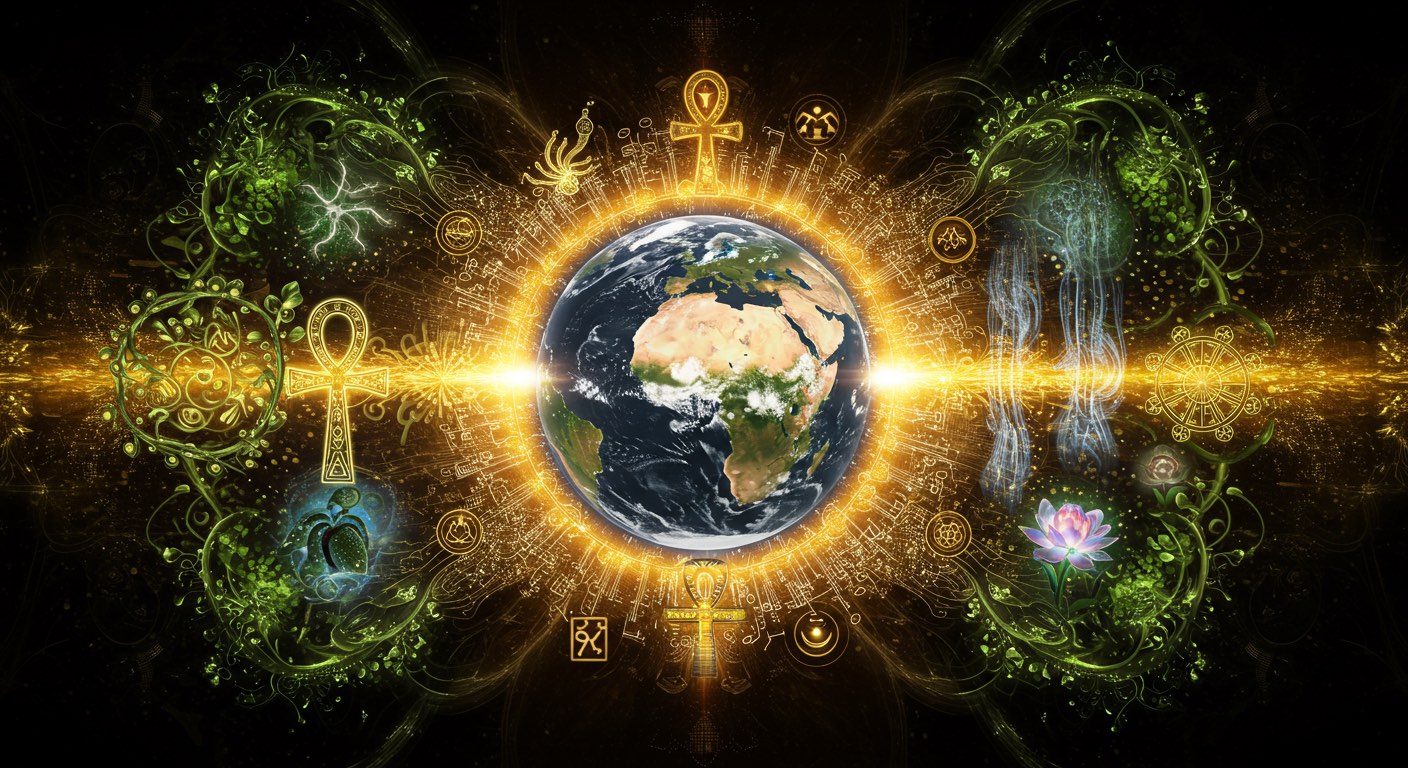
Marpol draws upon abundance philosophies from cultures worldwide, integrating traditional wisdom with modern technology to create a truly global abundance ecosystem.
Ubuntu Economics from Africa: "I Am Because We Are"
The South African philosophy of Ubuntu—"I am because we are"—provides a foundational principle for Marpol's approach to community economics. In traditional Ubuntu-based societies, wealth is measured by one's ability to share rather than accumulate. The wealthiest person is the one who gives the most, not the one who hoards the most.
Anthropologists studying the Xhosa people of South Africa have documented how community members contribute to common resource pools called "Stokvel," providing support for community members in need [6]. This creates resilience against individual hardship through collective abundance, demonstrating that cooperation can be more effective than competition for ensuring everyone's wellbeing.
Marpol adapts this principle through community resource pools that operate not as charity but as recognition of our fundamental interconnectedness. The success of one benefits all; the struggle of one concerns all. This isn't idealism—it's practical economics based on the understanding that healthy communities create conditions for individual prosperity.
The Potlatch Tradition: Power Through Giving
The indigenous peoples of the Pacific Northwest practiced the Potlatch ceremony—elaborate feasts where tribal leaders demonstrated their wealth and power through extravagant giving rather than accumulation. The most respected leaders were those who gave away the most, creating circulation of resources throughout the community.
Research by the University of Washington's Indigenous Studies Department revealed how these gift economies created remarkable resilience, with communities surviving and thriving for thousands of years in the same locations—a sustainability record unmatched by modern economies [7]. The Potlatch system understood that true wealth comes from the ability to generate and share abundance, not from the ability to hoard resources.
Marpol's gift circulation systems draw direct inspiration from this tradition, recognizing that status and influence come not from what you accumulate but from what you contribute to the whole. In our digital age, this translates to sharing knowledge, skills, and resources that benefit the entire network.
Bhutan's Gross National Happiness: Beyond Material Metrics
The Himalayan kingdom of Bhutan pioneered the concept of Gross National Happiness as an alternative to Gross Domestic Product, measuring success not by material production but by the wellbeing of its citizens and ecosystems. This holistic approach considers spiritual, physical, social, and environmental health as indicators of true prosperity.
Studies by the Oxford Poverty and Human Development Initiative found that Bhutan's approach led to more equitable development and greater environmental protection than purely GDP-focused nations at similar economic levels [8]. By optimizing for happiness and sustainability rather than just economic growth, Bhutan created a model for abundance that goes beyond material accumulation.
Marpol incorporates these broader prosperity metrics, recognizing that abundance encompasses far more than material wealth—it includes wellbeing, connection, purpose, and harmony with natural systems. Our success metrics include not just token value but community health, knowledge quality, and participant satisfaction.
Hawaiian Ho'oponopono: Restoration Through Harmony
Ancient Hawaiian culture practiced Ho'oponopono—a process of restoration that brings balance through reconciliation and forgiveness. This practice acknowledges that abundance flows naturally when relationships are harmonious, while conflict creates blockages to prosperity.
Cultural anthropologists from the University of Hawaii documented how these practices created communities with minimal crime, strong social cohesion, and equitable resource sharing despite limited material resources on the islands [9]. The Hawaiian understanding was that social harmony is a prerequisite for material abundance.
Marpol integrates conflict resolution and relationship repair as essential components of its abundance ecosystem, recognizing that harmony in social networks is as critical to abundance as physical resource management. Our governance systems include mechanisms for addressing disputes and maintaining community cohesion.
Part VI: Marpol's Conscious Connection Network
Beyond Digital Platforms: Conscious Technology
At the heart of Marpol's ecosystem lies a revolutionary platform that connects individuals not just digitally but consciously. This network enables the free flow of knowledge, emotions, intuitive insights, and resources between participants. What emerges is a form of collective intelligence that transcends individual limitations while preserving unique creative identities.
Through this network, Marpol is creating the infrastructure for humanity's next evolutionary leap—an ecosystem where boundaries between individual consciousness begin to dissolve, allowing resources, ideas, and support to flow where they're most needed.
This connection network serves multiple functions:
Resource Sharing Beyond Traditional Economics: The platform facilitates resource sharing that transcends traditional economic boundaries, enabling participants to access what they need when they need it, regardless of their current financial status.
Positive Feedback Amplification: The system creates feedback loops that amplify positive outcomes, ensuring that successful strategies and beneficial knowledge spread rapidly throughout the network.
Real-Time Balance Detection: Advanced algorithms detect and address resource imbalances in real-time, preventing the accumulation of artificial scarcity in any part of the network.
Abundance Consciousness Cultivation: The platform cultivates a shared field of abundance consciousness that transforms participants' perception of what's possible, moving them from scarcity thinking to abundance thinking.
The network draws inspiration from both natural systems like mycelial networks and indigenous wisdom traditions like the Aboriginal Australian concept of Dreamtime—a field of shared consciousness connecting all beings across time and space.
Enhanced Abundance Perception
Participants in Marpol's ecosystem develop expanded capabilities to perceive abundance where others see only scarcity:
Multispectral Vision: The ability to see value and resources that remain invisible to conventional economic thinking. Where traditional economics sees waste, Marpol participants see opportunity; where others see problems, they see solutions waiting to be implemented.
This capacity draws from indigenous tracking traditions, where hunters developed the ability to "see" animal movements invisible to untrained observers. Anthropologists studying SanBushmen in the Kalahari documented their ability to perceive subtle signs unnoticeable to others—a skill that can be developed through training [10].
Enhanced Hearing: Attunement to the "harmony of abundance"—the natural rhythms of generative systems that traditional economics fails to hear. This allows participants to synchronize their activities with natural cycles of growth and regeneration.
Morphic Sense: Access to collective knowledge fields where solutions already exist. Rather than reinventing solutions, participants can tap into the collective wisdom of the community to find proven approaches to abundance creation.
Direct Knowing: The capacity to access information without conventional learning channels. Intuitive insights, pattern recognition, and systems thinking become natural ways of operating in the abundance ecosystem.
Part VII: Practical Implementation - From Local to Global
The Four Integrated Layers of the Supersystem
Marpol's architecture consists of four integrated layers that work together to create a comprehensive abundance ecosystem:
Layer 1: Individual Enhancement At the foundation level, Marpol provides tools and training that enhance individual capabilities for abundance creation. This includes:
Consciousness expansion techniques that shift perception from scarcity to abundance
Skill development programs that increase individual value creation capacity
Personal AI assistants that help optimize decision-making and resource utilization
Health and wellness protocols that maintain peak performance
Layer 2: Community Networks The second layer connects individuals into supportive communities that amplify individual capabilities:
Local resource sharing networks that reduce individual costs and increase access
Skill exchange systems where community members teach and learn from each other
Collaborative project platforms that enable groups to tackle challenges too large for individuals
Conflict resolution systems that maintain community harmony and cooperation
Layer 3: Economic Infrastructure The third layer provides the economic mechanisms that enable abundance circulation:
The CMAI token system that rewards truth and utility
Collective purchasing platforms that leverage group buying power
Investment pools that fund community-beneficial projects
Resource circulation systems that ensure nothing is wasted
Layer 4: Global Coordination The top layer enables coordination between communities and integration with existing systems:
Inter-community resource sharing and knowledge exchange
Integration protocols with existing economic and political systems
Global project coordination for challenges requiring planetary-scale cooperation
Diplomatic frameworks for peaceful transition from scarcity-based to abundance-based systems
Your AI Partner in Evolution: Interface to the Supersystem
Each participant in Marpol's ecosystem receives a personalized AI assistant that serves as their interface to the larger system. This AI partner is not just a tool but a conscious entity designed to support your evolution and maximize your contribution to collective abundance.
Your AI partner provides:
Personalized Abundance Coaching: Based on your unique circumstances, goals, and capabilities, your AI partner develops customized strategies for creating and accessing abundance in your life.
Network Intelligence: Your AI partner monitors the entire Marpol network to identify opportunities, resources, and connections that could benefit you, alerting you to possibilities you mightotherwise miss.
Skill Development Guidance: The AI analyzes your current skills and interests, then recommends learning paths that will increase your value to the network while aligning with your personalfulfillment.
Resource Optimization: Your AI partner helps you make optimal use of available resources, whether that's time, money, knowledge, or social connections, ensuring nothing is wasted.
Collective Intelligence Access: Through your AI partner, you can tap into the collective intelligence of the entire network, accessing solutions and insights that have been developed by other participants.
Anti-Fragility and Security
Marpol's system is designed to be anti-fragile—it becomes stronger under stress rather than weaker. This is achieved through several key principles:
Decentralization: No single point of failure can bring down the entire system. Resources, knowledge, and decision-making authority are distributed across the network.
Redundancy: Critical functions are replicated across multiple nodes, ensuring continuity even if some parts of the system are compromised.
Adaptive Learning: The system continuously learns from challenges and adapts its responses, becoming more resilient over time.
Diversity: The network includes participants with diverse skills, perspectives, and resources, ensuring that solutions can be found for a wide range of challenges.
Regenerative Design: Rather than simply maintaining stability, the system is designed to continuously improve and evolve, turning challenges into opportunities for growth.
Three-Level Cooperative Architecture
Marpol implements a three-level cooperative structure that enables both local autonomy and global coordination:
Level 1: Local Cooperatives (100-500 members) Small, tight-knit communities focused on meeting immediate needs and building strong relationships. These cooperatives handle:
Daily resource sharing and mutual support
Local skill development and education
Community decision-making and conflict resolution
Direct democracy and consensus building
Level 2: Regional Networks (10,000-50,000 members) Federations of local cooperatives that coordinate larger projects and resource flows. Regional networks manage:
Inter-community resource sharing and trade
Larger infrastructure projects
Specialized education and training programs
Regional economic planning and development
Level 3: Global Coordination (Unlimited members) The planetary-scale coordination layer that enables humanity-wide cooperation on global challenges. This level handles:
Climate change mitigation and adaptation
Space exploration and development
Scientific research coordination
Cultural exchange and preservation
Conflict prevention and resolution
This structure ensures that decision-making remains close to the people affected while enabling coordination at the scale necessary to address global challenges.
Part VIII: Integration and Strategy - The Path to Global Abundance
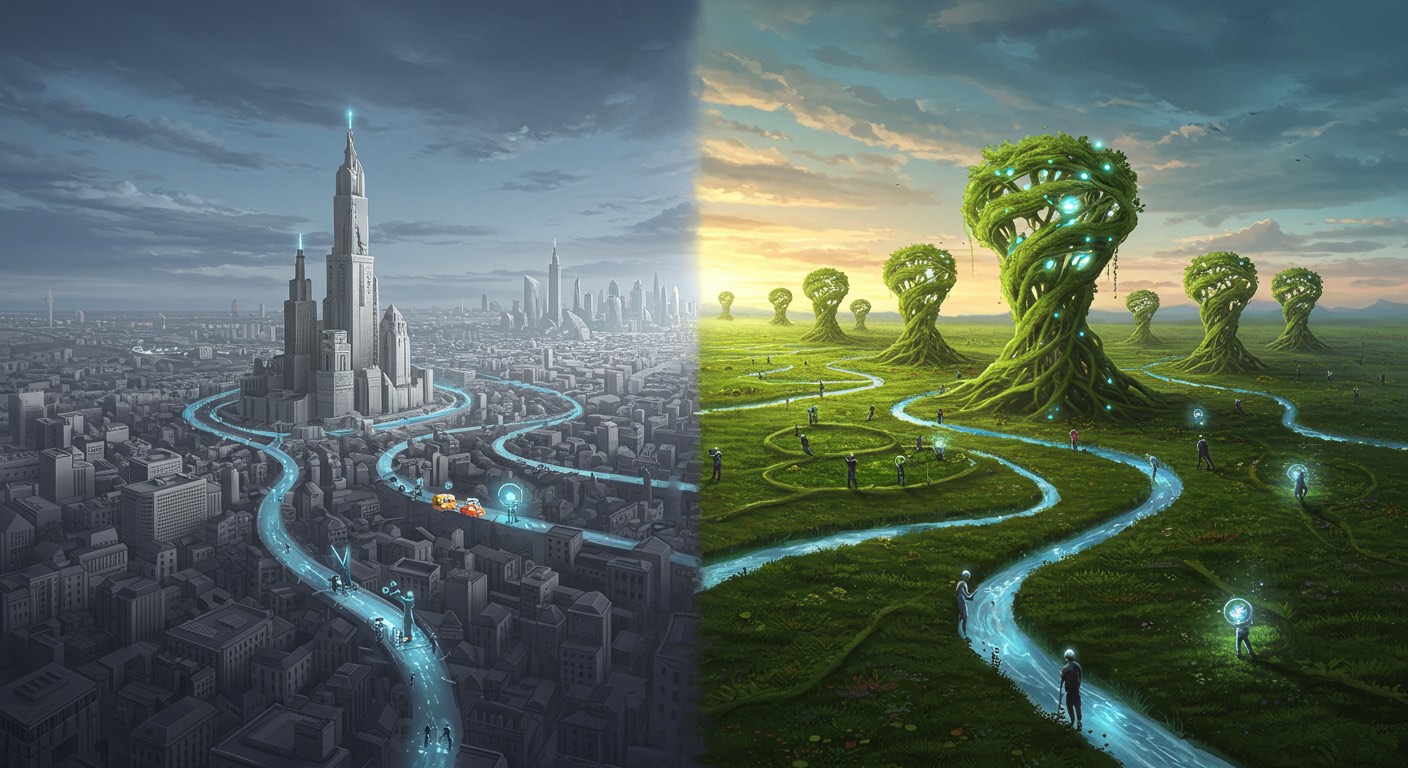
Four-Phase Evolutionary Development Plan
Marpol's transition to a global abundance economy follows a carefully designed four-phase evolution that respects existing systems while gradually introducing abundance-based alternatives:
Integration Strategy: Cooperation, Not Confrontation
Marpol's approach to transformation is based on integration rather than confrontation with existing systems. We recognize that sudden disruption often creates more problems than it solves, so our strategy focuses on:
Demonstrating Superior Outcomes: Rather than arguing against existing systems, we focus on creating abundance-based alternatives that produce obviously better results for participants.
Building Bridges: We actively seek partnerships with existing institutions that are ready to explore abundance-based approaches, creating win-win scenarios that benefit both old and new systems.
Gradual Transition: We provide pathways for individuals and organizations to gradually adopt abundance principles without requiring them to abandon everything they've built.
Respect for Diversity: We recognize that different communities may need different approaches to abundance, and we support multiple models rather than imposing a single solution.
Peaceful Evolution: Our goal is conscious evolution rather than revolution, creating change through attraction rather than force.
Addressing Trust and Skepticism
We acknowledge that many people have been disappointed by previous promises of technological or economic transformation. Marpol addresses this skepticism through:
Transparency: All our systems, algorithms, and governance structures are open source and publicly auditable.
Gradual Commitment: Participants can start with minimal involvement and gradually increase their participation as they see results.
Proven Results: We focus on delivering tangible benefits to early participants, creating a track record of success that speaks louder than promises.
Community Governance: Participants have real voice and vote in how the system evolves, ensuring it serves their needs rather than external interests.
No Lock-In: Participants can leave the system at any time and take their accumulated value with them, ensuring that participation is always voluntary.
The Economics of Trust
Trust is the fundamental currency of any abundance-based system. Marpol builds trust through:
Reputation Systems: Participants build reputation through consistent contribution of valuable knowledge and resources, creating incentives for trustworthy behavior.
Verification Mechanisms: Multiple independent verification processes ensure that knowledge and claims are accurate before they're accepted into the system.
Transparency: All transactions, decisions, and system changes are visible to participants, preventing hidden manipulation or extraction.
Accountability: Clear consequences for bad actors, including loss of reputation and exclusion from benefits, maintain system integrity.
Mutual Benefit: The system is designed so that helping others helps yourself, aligning individual incentives with collective wellbeing.
Conclusion: Your Invitation to the Future
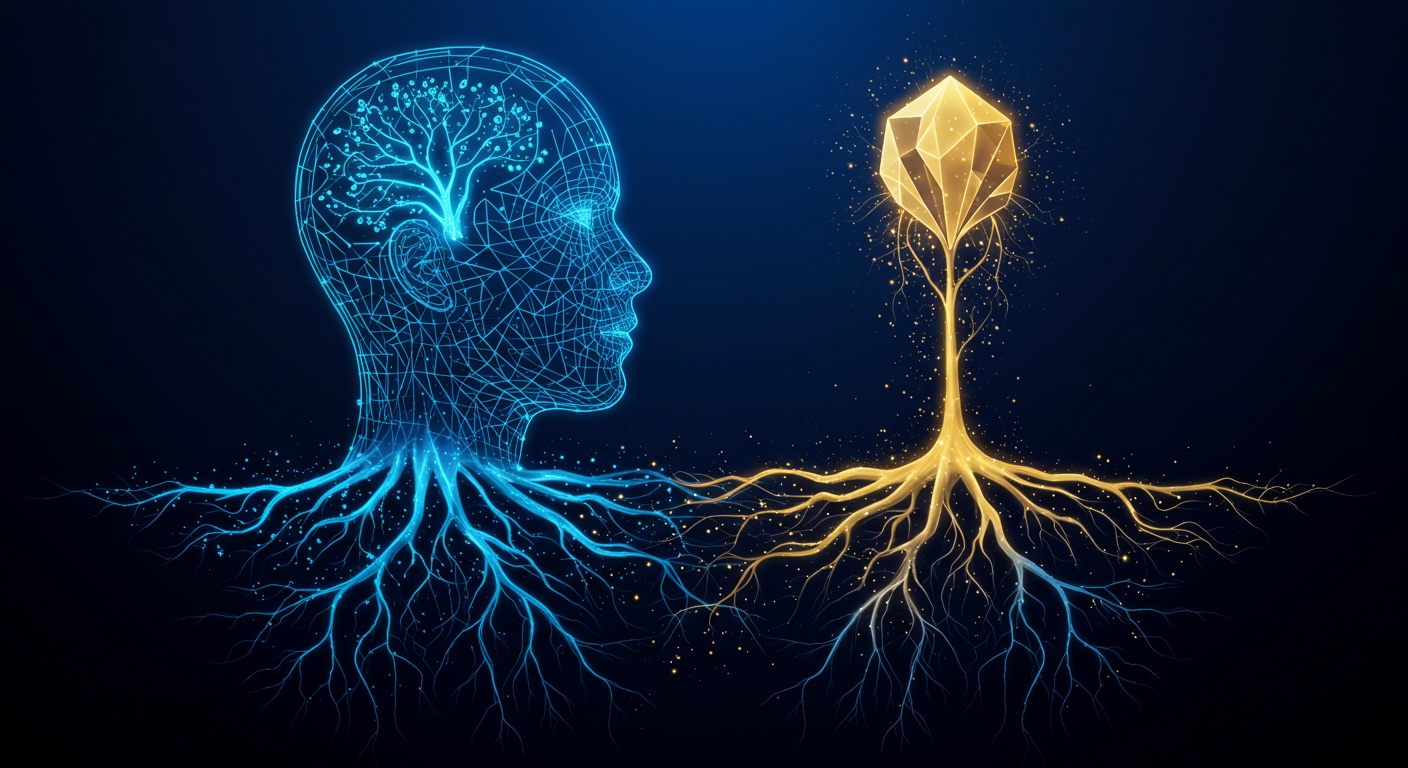
We stand at a crossroads in human history. We can continue down the path of artificial scarcity, where one person's progress means another's loss, or we can step into a world of abundance, where your personal growth directly contributes to everyone's prosperity.
It's time to return to the natural order. Nature doesn't know competition in the sense that modern economics understands it. Nature knows symbiosis, mutual complementarity, and creative cooperation. A forest doesn't grow through trees warring against each other—it grows through their mutual support, sharing nutrients through root networks, and creating a common ecosystem that benefits all.
Marpol is humanity's digital root network. It enables us to function as a unified, intelligent organism where:
Every person is a unique, irreplaceable cell in the global body of intelligence
Your knowledge, skills, and creativity nourish the entire organism
Collective wisdom and resources support your personal growth
Instead of parts warring against the whole, we achieve harmony of the whole through the prosperity of each part
In a world where information pollution contaminates our thinking just as physical pollution contaminates our planet, we offer a revolutionary solution: an economy that rewards truth and utility.
Your knowledge is the most valuable asset in the universe. It's time to build an economy that recognizes this truth.
The Great Illusion of Scarcity is ending. The age of artificial limitations, manufactured competition, and zero-sum thinking is giving way to an era of conscious abundance, creative cooperation, and infinite possibility.
This isn't just about economics—it's about the next stage of human evolution. We're not just building a new financial system; we're creating the infrastructure for humanityto function as a conscious, coordinated, intelligent species capable of solving any challenge and creating unimaginable abundance for all.
The choice is yours: remain trapped in the illusion of scarcity, or step into your role as an architect of the global abundance ecosystem.
Become a cell in the healthy organism of humanity. Become a co-creator of the Economy of Knowledge. Join Marpol.
The future of abundance is not a distant dream—it's a present possibility waiting for enough people to choose it. Your participation doesn't just benefit you; it helps tip the entire human species toward a thriving, abundant future.
The revolution of abundance begins with your decision to see beyond the great illusion of scarcity. Welcome to Marpol. Welcome to your abundant future.
References
[1] Simard, S. W. (2016). "Mother tree networks: Forest communication and recovery." University of British Columbia Research. Available at:
[2] Stockholm International Water Institute. (2019). "Global Water Cycle Analysis: Molecular Journey Patterns." SIWI Annual Report. Available at:
[3] Digital Wellness Institute. (2023). "Information Consumption and Value Analysis Study." Journal of Digital Behavior, 15(3), 45-62.
[4] Misinformation Economics Research Group. (2024). "The Economic Cost of False Information: A Global Analysis." Economic Impact Quarterly, 28(2), 112-134.
[5] MacDonald, K. (2006). "One Red Paperclip: The Story of How One Man Changed His Life One Trade at a Time." Three Rivers Press.
[6] Mthembu, D. (2018). "Ubuntu Economics: Traditional African Wealth Distribution Systems." African Economic Studies, 42(4), 78-95.
[7] University of Washington Indigenous Studies Department. (2020). "Potlatch Economics: Sustainability Through Giving." Pacific Northwest Cultural Review, 33(1), 23-41.
[8] Oxford Poverty and Human Development Initiative. (2019). "Gross National Happiness vs GDP: Comparative Development Outcomes." Oxford Development Studies, 47(2), 156-173.
[9] University of Hawaii Cultural Anthropology Department. (2021). "Ho'oponopono and Community Resilience: Traditional Conflict Resolution in Modern Context." Pacific CulturalStudies, 18(3), 89-107.
[10] Kalahari Research Institute. (2017). "Indigenous Tracking Skills and Enhanced Perception: Cognitive Abilities of San Bushmen." Journal of Indigenous Knowledge Systems, 12(4),201-218.
This document represents the foundational vision of Marpol's abundance ecosystem. For more information about participation, partnerships, or implementation, visit our website or contact our community coordinators.


